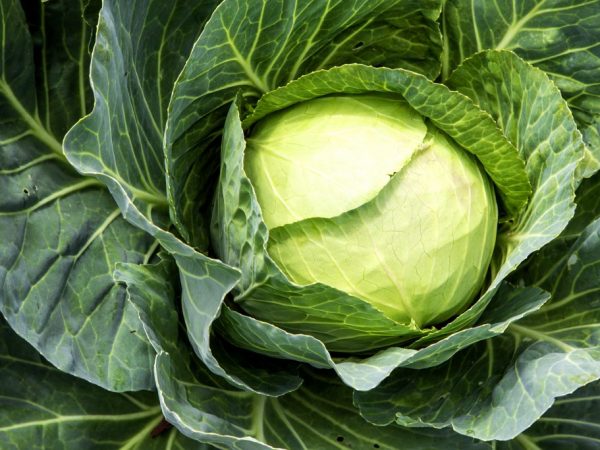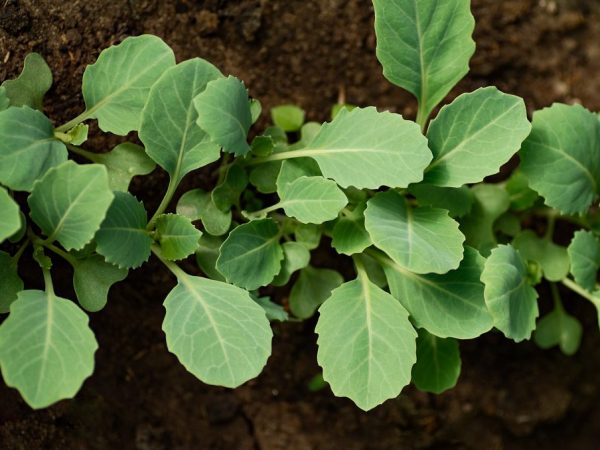Characteristics of cabbage variety Larsia f1
Cabbage Larsia f1 is a mid-late hybrid of white cabbage. Consider the features and characteristics of this hybrid.

Characteristics of cabbage variety Larsia f1
Characteristic
Larsia F1 is a high-yielding cabbage hybrid. Its yield is 240-280 kg / ha. The recommended planting density is 30-40 thousand plants per hectare. The growing season is 110-115 days - the time from planting seedlings to harvesting a full harvest. The storage period after harvesting is from 4 to 8 months. Due to its resistance to diseases, the ability to long-term storage on the vine, it is ideal for farming activities. It has an attractive presentation - it is very popular in the agricultural market. Also great for home cultivation.
Description of the head
The Larsia hybrid has a strong head of cabbage with a high dry matter content and a large number of thin leaves. Description of the external and internal structure of the head of cabbage:
- shape - flattened, oval-rounded;
- average weight - from 4 to 6 kg;
- the surface is smooth;
- density - high;
- color - white with a green tint;
- cut color - white;
- veins are thin;
- stump - short;
- the internal structure is homogeneous.
The leaves of the hybrid are rich green outside with a strong waxy bloom, dense. The shape is flat, rounded on the surface of the head of cabbage. Leaf rosette - compact, medium size.
Application
Cabbage has excellent taste: sweet, crispy. Suitable for fresh consumption, excellent for processing (fermentation, salting, preservation). Retains its properties during heat treatment.
Growing
Sowing seeds of Larsia, a medium late variety of cabbage, begins from the third decade of March to the third decade of April. The ripening period of full-fledged seedlings before planting in open ground lasts 30-40 days.
Sowing
The first step is to prepare the soil mixture for future seedlings. You can mix the soil yourself or buy it ready-made in the store. Mix humus and sod soil in a 1: 1 ratio, and add a little ash (1 tbsp. L. Per 1 kg of soil mixture). You can also use peat.
Then prepare containers for filling with soil (boxes, cassettes, plastic cups). If the container has already been in use, then it should be treated with a disinfectant or dried well. Fill the container with the soil mixture and sow the seeds.
Picking

Plants need a dive
The first shoots will appear in 7-10 days. If your seedlings are located in boxes and are densely sown, then two weeks after emergence, they should be dived into a separate container. When picking, you need to leave only strong and healthy plants.
Lighting
For the rapid development of seedlings, good lighting is important for 14 hours a day. If the plants are in a dark room and do not receive enough sunlight, fluorescent lamps should be used.
Watering
Watering the seedlings should be moderate; care must be taken that the earth does not dry out. Excessive moisture also negatively affects the formation of plants. Systematic loosening of the soil is recommended.
Temperature regime
Before the first shoots appear, the air temperature should be 18-20 ° C. During the growth of seedlings, in order to avoid stretching and strengthen the root system, there should be temperature drops: in the daytime 16-17 ° C, and at night 7-10 ° C.
Top dressing
When growing seedlings indoors, regular plant nutrition is mandatory. As a top dressing, you can use various fertilizers based on N, P, K. The first top dressing takes place 7-10 days after the appearance of the first shoots. The second - 2-3 days before planting in open ground.
Hardening
So that after planting the seedlings can quickly adapt in the open field, a hardening process must be carried out. The beginning of the process begins 10 days before planting the plants.
The first two days - provide access to fresh air for seedlings within 3-4 hours. The next three days - the seedlings are taken out into the street, every day, gradually, increasing the time. The remaining five days - the seedlings remain outside until they are planted in the open ground.
In early May, 30-40 days after sowing the seeds, 4-5 leaves should form on the plant - this indicates that it is time to plant the seedlings in open ground. During planting, the plant must be deepened to the distance to the first true leaf.
Pests and diseases
Cabbage Larsia F1 has strong immunity to bacteriosis, thrips and caterpillars. The pests that often affect seedlings are the cruciferous flea. In the fight against small striped beetles, spraying the culture with Intavir will help.
The variety has a strong immunity to fusarium.
If the rules for watering and temperature conditions are not followed, the plant is prone to the appearance of root rot and black legs.
If the disease is affected, the seedlings must be treated with Rizoplan or Trichodermin. Such preparations are environmentally friendly and will not harm plants in any way.
Conclusion
The mid-late white cabbage hybrid has gained popularity with many gardeners. The vegetable has an excellent taste, ideal for processing. Suitable for farming activities - growing in large volumes, with the aim of further implementation. To obtain a high-quality harvest, timely care should be provided for the cabbage.


